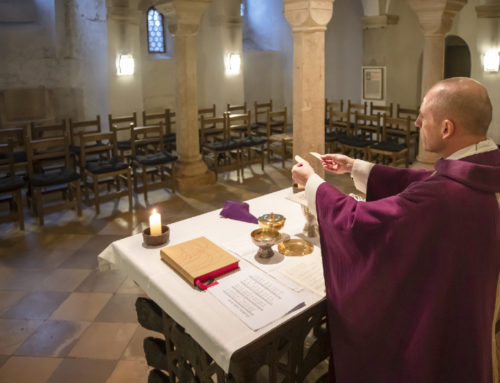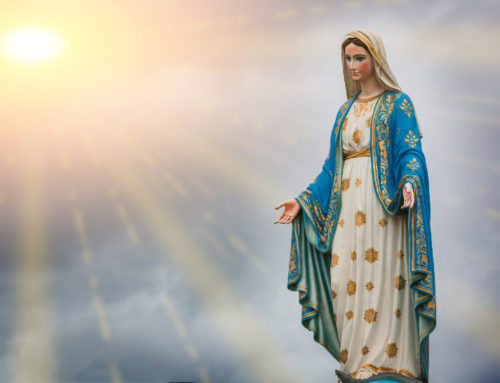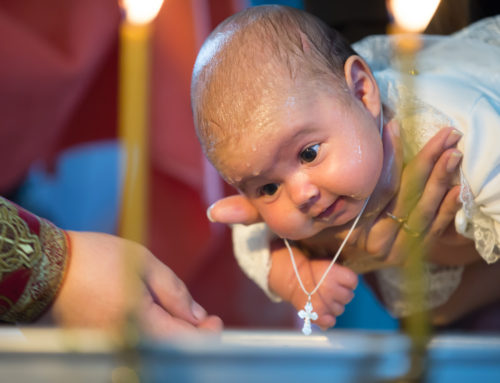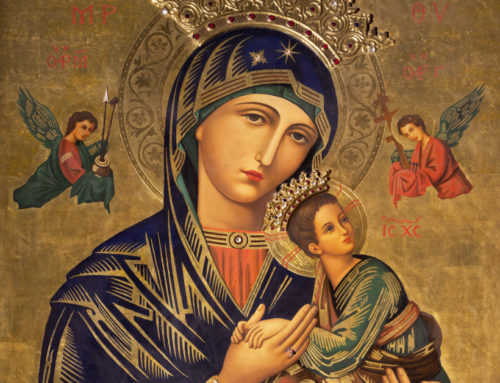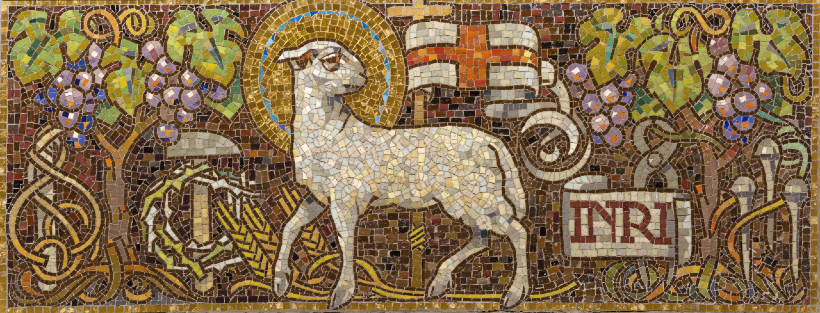
photo of the symbolic mosac of Lamb of God by Renáta Sedmáková
My sister-in-law’s family is Eastern Catholic, but they’re from Italy. How is that possible?
The Italo-Albanian Church is an Eastern Catholic Church in an area of Italy that was settled by Albanians. Because they brought their Byzantine traditions with them, they continued to worship in the Eastern tradition. But that’s just part of the story. The southern part of Italy and most of Sicily had ties to Greece, and from the very beginnings of Christianity, Byzantine communities flourished there. Because this area was, geographically, part of the Latin Church, a slow but inevitable process of incorporation into the Latin Church took place. However, in the eighth century, the Byzantine Emperor Leo III removed the area from latin authority and placed it under Constantinople while not replacing the bishops. This led to an almost immediate resurgence of Byzantine practices, and dozens of Byzantine monasteries developed along the coast.
But all was not to remain so comfortable. In the eleventh century the Normans conquered this part of Italy and moved it back under Latin control. Byzantine practices were discouraged, and Byzantine bishops were replaced by Latin bishops. Once again, a process of latinization took place.
With the arrival of two groups of Albanians in the fifteenth century, there was yet another swing of the pendulum. those Albanians who were Latin Catholics were simply absorbed into the Latin Church, while those who were Orthodox retained their own traditions, and a third resurgence of Byzantine practice took hold. This resurgence was bolstered by the publication of the papal bull Etsi pastoralis, which protected the Italo-Albanian Church established the equality of the Byzantine and Latin Rites, and set the stage for further developments, especially those seen under the pontificate of Pope John Paul II of blessed memory.
I sometimes hear the term Greek Catholic. Is that the same as Greek Orthodox?
No. The terms Catholic and Orthodox set them apart. At present, the Catholic Church and the Orthodox Church are not in communion with one another. To make things more complex, however, the term Greek Catholic has multiple meanings. It may refer to the very small Eastern Catholic Church in Greece, or it may refer to any of the Eastern Catholic Churches of the Byzantine Rite! If you were to visit my Melkite parish you would see a sign that proclaims “Holy Cross Melkite-Greek Catholic Church.” Here the use of the word Greek does not mean the parish is made up of Greeks (although there are some) but, rather, that the parish follows the Byzantine tradition. In fact, most Byzantine Churches retain some Greek in their liturgies, even though it may be as minor as it is in the Roman Catholic Church – the expressions Kyrie eleison (“Lord have mercy”) and Christe eleison (“Christ have mercy”) are Greek.
My family was Eastern Catholic, but when we came to the United States we settled in an area where there were no Eastern Catholic Churches, so we started going to the Latin Church. Does that make us Roman Catholics?
No. One of the marvelous things about the Catholic Church is that Catholic is Catholic. A Catholic can go to any Catholic Church regardless of Rite and receive the sacraments or mysteries there. The Rite to which one belongs is a function of the Rite to which your father belonged. If your father were, for example, Ukrainian, then you are a Ukrainian regardless fo where you were baptized (assuming, of course, that you were baptized in a Catholic Church).
Simply attending a different ritual church does not change your Rite. That requires specific action on your part, and on the bishops involved. Changing ritual churches is not something that one undertakes without serious and deep consideration. First, it can normally only be done once. Second, you must normally reside in and be active in the ritual church to which you wish to belong for a substantial period of time (usually several years) before a petition to change churches would even be considered.
Typical reasons for changing ritual churches involve such things as a deep love for, and spiritual nourishment by, the other church, along with an intention to live out the spiritual life of that church. Many of the priests that I work with in the Eastern Churches did, in fact, grow up as Latin Rite Catholics who, because of their love for the East, changed ritual churches and later entered into the seminary to study for the priesthood.
Let me share one anecdote with you about what can happen when one thinks one has changed ritual churches (or never knew one was a member of a different ritual church) because of long-standing attendance at a Roman Catholic Church. My predecessor deacon in the Melkite parish I serve was ordained as a Latin Rite deacon. When he was asked to serve the Melkites, he petitioned for bi-ritual faculties. In doing the necessary research it was discovered that he was actually a member of the Italo-Albanian Church. His family had been attending Latin Rite Church for so long that he didn’t even know that! Such things happen, and the church generally doesn’t worry about them too much.
Excerpt from Faulk, Edward. 101 Questions and Answers on Eastern Catholic Churches. (Paulist Press: Mahwah, NJ) 2007.

